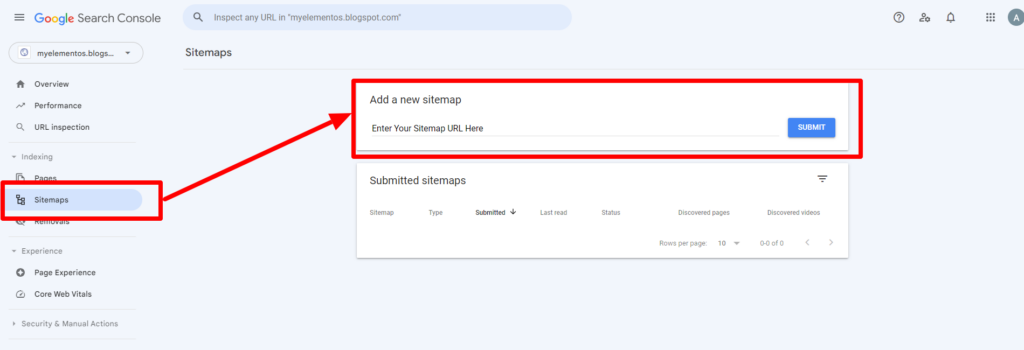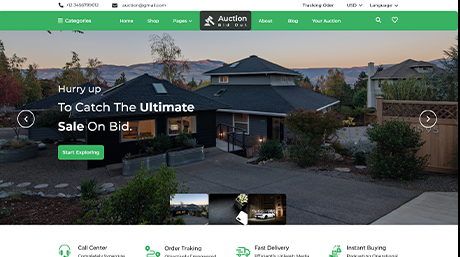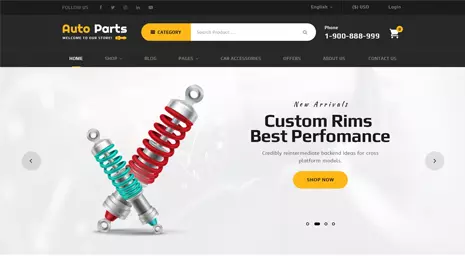Do you ever think of what an XML sitemap is in SEO on your website? If not, then you must start thinking about it, as it impacts directly on SEO. It must be exciting, right? Yes, creating XML sitemaps for your website leads straight to SEO. And then the chain goes on with how to increase website traffic, conversions, and more.
It is most probably seen that search engine crawlers consider those websites on top that have XML sitemaps. Also, it tells search engines about the existence of your website, resulting in more traffic.
Sitemaps are nothing but a file that holds vital content in XML format, which is easy to index. Want to know more about the XML sitemap on your website?
This blog will tell you the ins and outs of an XML sitemap, along with its creation on your website.
What is an XML Sitemap and its usage?
- An XML sitemap is a collection of files that contain the entire website content in the form of XML. And this is counted by the search engines to index your website for better rankings.
- Earlier, sitemaps were not considerable for search engines and only in the form of HTML format. As change is the law, they’ve evolved in the XML format and are more considerable for search engines.
- And the only target is the search engines to acquire great ranks. In short, an XML sitemap is a direct way of telling search engines about your website’s existence. Also, you can point out the vital links that can acquire good search engine rankings for your website.
- You are mistaken that XML Sitemaps is the search engine booster. It is a way of telling search engine crawlers to index your content correctly. Search engines won’t crawl every part of your website. So there is an easier way to create XML sitemaps to help search engines get your website noticed better.
The need to have an XML sitemap On Your Website
- When you have XML sitemaps for your website, it gives a direction to the search engines about its existence. Even if your website’s content is not pointed out by other websites, an XML sitemap will do the rest.
- Adding an XML sitemap shows that you value that page and also gives additional details about your page.
- Moreover, this is a great way to tell search engines about the new pages. As new pages are added, XML sitemaps help search engines find them more easily.
Methods to Create an XML Sitemap on Your Website
- Create an XML sitemap in WordPress without a plugin.
- Create an XML sitemap in WordPress using a plugin.
- More ways to create an XML sitemap on your website.
1. Create an XML sitemap on your website without a plugin.
Creating an XML sitemap is so simple in WordPress, and that too without using any plugins.
You know WordPress works for its users’ convenience and priority. So, the latest versions of WordPress come with automatic XML sitemaps integrated.
This feature ensures that the websites are registered well on SEO and get all the benefits easily. However, the only limitation of this feature is that users cannot decide the addition or removal of content on the XML sitemap. Well, this is a basic method that is mostly used by small business owners or startups.
And to create an XML sitemap in WordPress without a plugin, you simply need to follow this:
Get access to your website domain and simply add the below line at the end: “wp-sitemap.xml”.

That’s it. WordPress will automatically create an XML sitemap for you.
2. Activate an XML sitemap in WordPress using a plugin.
- Now comes the method by which we are going to create an XML sitemap using a plugin. And out of so many uncountable plugins, we are choosing the All-in-One SEO plugin.
- This one is most popular for optimizing the website for speed and performance. It provides tools to boost WordPress website’s speed for search engines.
- To start, we first need to install and activate the AIOSEO plugin on your website.
- Here we are using the free version of this plugin, as the sitemap feature is included in the free version. You can either switch to the premium version for more advanced services.
- Once done with installation and activation, simply reach the AIOSEO plugin under the dashboard.
- Now, you need to select the Sitemaps option under it.
- This will help you reach the sitemap page, and there you will find that the sitemap feature is already enabled.
- Under the preview section, you can tap the Open Sitemap button to preview and watch out for how it looks. Or you can simply add the line “sitemap.xml” to the website’s URL to see the live preview.
- You can further customize the settings for the AIOSEO sitemap created `with the basic version. And for this, you simply need to scroll out with your mouse to the bottom of the page.
- The options in this section allow you to customize the sitemap, including the indexes and including and excluding the post types.
- Well, the AIOSEO plugin includes all your website content in the sitemap.

Adding External Content:
If you need to add external content, such as landing pages, then you need to follow this:
- Simply switch on the Additional Pages section, and it will generate a form to add custom pages to the sitemap.
- Here, you can simply add the URL of the page you need to add. Then set its priority limit from 0.1 to 1.0.
- Further, you can choose the frequency of updates and the last modified date of the page.
- Now what if you wish to exclude some pages from your sitemap? We have a solution to this:
- Reach the Advanced Settings page under the AIOSEO and the Sitemap section.
- Also, you can even disable the page by clicking the “No Index” or “No Follow” option.
3. More ways to create an XML sitemap on your website
It happens that not every user has WordPress with them. Most of them still go with another CMS for the web design.
In this case, you can use external tools to generate an XML sitemap create website. One of the most popular tools, the “Google Suggests” tool, helps you generate a sitemap for your website.
Submit your created Sitemap to the search engines.
- When a user creates a sitemap for the website, this immediately sends a notification to the search engines. However, it might not happen the same way, so you need to manually submit the sitemap to the search engines.
- For this guide, we are going to submit the sitemap to the Google Search Console. This is one of the most widely used tools to monitor the website’s presence in the search results.

- Firstly, you need to visit the Google Search Console and sign up to create an account.
- The next page will ask you to select the property type from the domain and the URL prefix. It is highly recommended to go with the URL prefix for easier submission.
- Next, simply enter the URL and tap the Continue button.
- The next step is to verify the ownership of the website, and there are various methods available for this.
- You need to select the HTML tag method, as this is the most recommended one.
- Then, you simply need to copy the code on the screen and directly reach the admin area of your website.
- If we are going with AIOSEO, then it makes it easier to verify using webmaster tools. For this, you simply need to visit the general settings of AIOSEO and then tap Webmaster Tools. Further, you need to enter the verification code provided by Google. Once done, tap the Verify button, and this will add your website to the Google Search Console.
- Now we need to add the XML sitemap to the Google search console. You simply need to tap the Sitemaps option from the left panel of your account dashboard.
- Next, you need to add the end part of your sitemap URL in “Add a New Sitemap” and tap the Submit button.
- Finally, Google will be able to add your XML sitemap to the Google Search Console.
Conclusion
So, you must now be clear on why XML sitemaps in SEO matter. These are nothing but the files that contain the vital content of your website in the form of XML. In this article we saw that how we can create XML Sitemap using with and without Premium WordPress Plugins. This is the best way to let search engines know about your website better. Also, this tells users to visit the vital pages of your website. The ultimate goal is to boost the search engine rankings for your website. The entire content is all about the XML sitemap in SEO, its usage, and how to activate it. I hope this has helped you find the best information about XML sitemaps in SEO.













